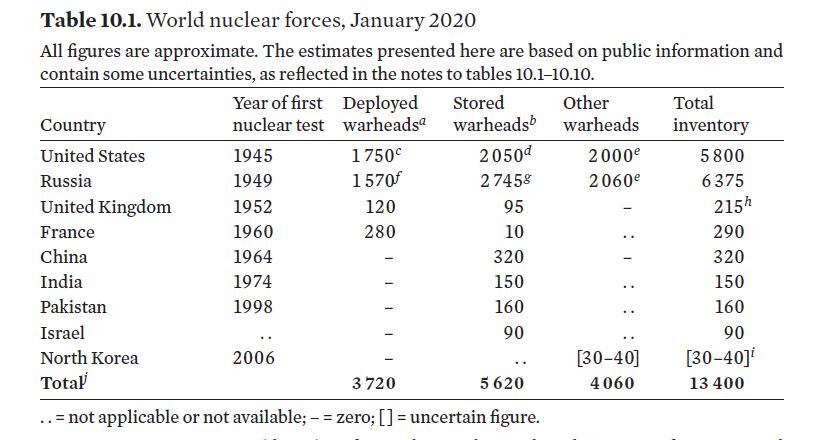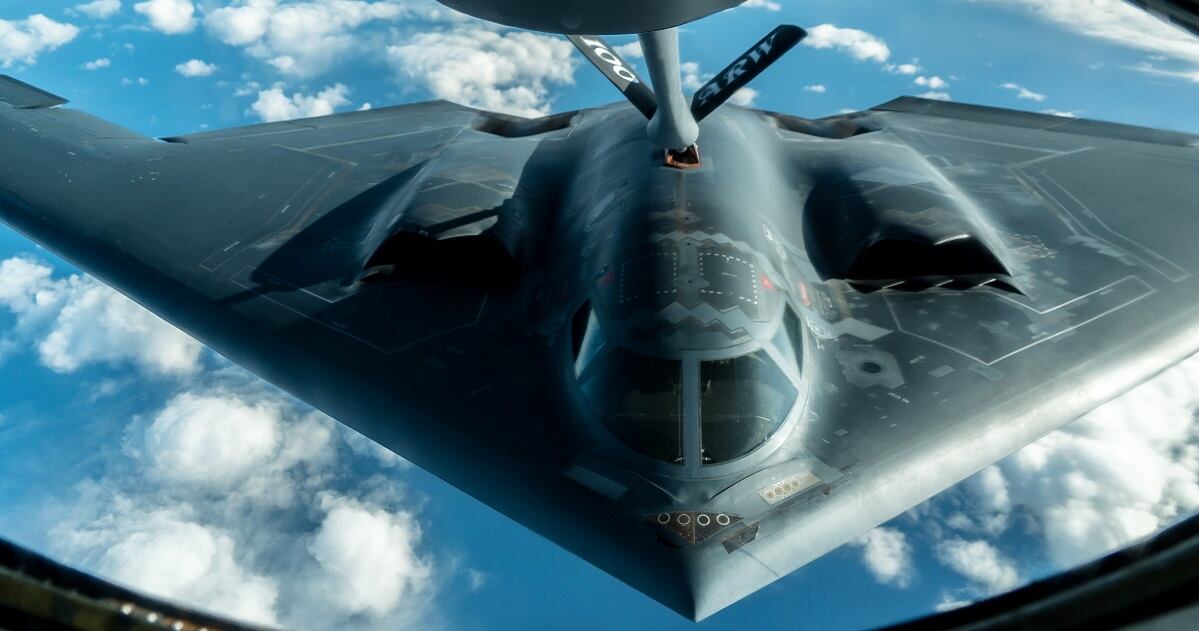WASHINGTON — Overall nuclear warheads in the world decreased in 2019, but broad modernization efforts by the biggest nuclear countries — along with a degradation of arms control agreements around the world — could mean a dangerous mix for the future, according to an annual report from the Stockholm International Peace Research Institute, or SIPRI.
The organization estimated that at the end of 2019, nine countries possessed a total of 13,400 nuclear warheads, down from the 13,865 estimated in SIPRI’s previous report, which in turn was a drop from 14,465 the year before. The reductions were primarily due to numbers dropping under the New START nuclear agreement between Russia and the U.S., which experts largely expect not to be renewed at the start of the new year.
Russia is the largest holder of nuclear warheads, according to SIPRI’s numbers, with 6,735 total, of which 1,570 are deployed. The U.S. follows at 5,800, with 1,750 deployed. The two countries account for over 90 percent of the world’s nuclear arsenal.
The United Kingdom (250 total, 120 deployed) and France (290 total, 280 deployed) are the other two nations believed to have deployed nuclear warheads. China (320 total), India (150 total), Pakistan (160 total), Israel (90 total) and North Korea, (30-40 total) round out SIPRI’s list.
Both the U.S. and Russia are engaged in expensive, widespread modernization efforts of its nuclear arsenal. America is upgrading both its legacy nuclear warheads with new designs, as well as updating its fleet of nuclear-capable bombers, submarines and ICBMs. Earlier this year, the Pentagon deployed for the first time the W76-2, a low-yield variant of the nuclear warhead traditionally used on the Trident submarine launched missile, and early design work is being done on another new submarine launched warhead design, known as the W93.

Russia, meanwhile, has spoken openly about developing hypersonic weapons that could be nuclear equipped and has invested in novel weapons such as the Status-6, an underwater drone that could be equipped with a nuclear warhead. Moscow has also vocalized new deployment plans for its weapons and on June 2 made official a policy that it may use nuclear weapons in response to a conventional attack.
Those investments by the world’s two nuclear superpowers come against a backdrop of the collapse of numerous arms control agreements. 2019 saw the formal end of the Intermediate Range and Shorter Range Missiles (INF) treaty, and in May the U.S. announced its intention to withdraw from the Open Skies arms control verification agreement.
The last major arms control agreement between Russia and the U.S. is New START, which is set to expire in February of 2021. In recent weeks the U.S. has announced its intention to start negotiations on a new arms control agreement that would include China.
However, Chinese officials have repeatedly and categorically denied that it would be willing to join such an agreement, and experts largely view any efforts to create a trilateral nuclear arms control pact as a New START replacement are non-starters, leading to widespread agreement among analyst that New START is likely doomed under the Trump administration.
“The deadlock over New START and the collapse of the 1987 Soviet–US Treaty on the Elimination of Intermediate Range and Shorter Range Missiles (INF) Treaty in 2019 suggest that the era of bilateral nuclear arms control agreements between Russia and the USA might be coming to an end,” said Shannon Kile, Director of SIPRI’s nuclear disarmament, arms control and non-proliferation program.
“The loss of key channels of communication between Russia and the USA that were intended to promote transparency and prevent misperceptions about their respective nuclear force postures and capabilities could potentially lead to a new nuclear arms race.”
Aaron Mehta was deputy editor and senior Pentagon correspondent for Defense News, covering policy, strategy and acquisition at the highest levels of the Defense Department and its international partners.





